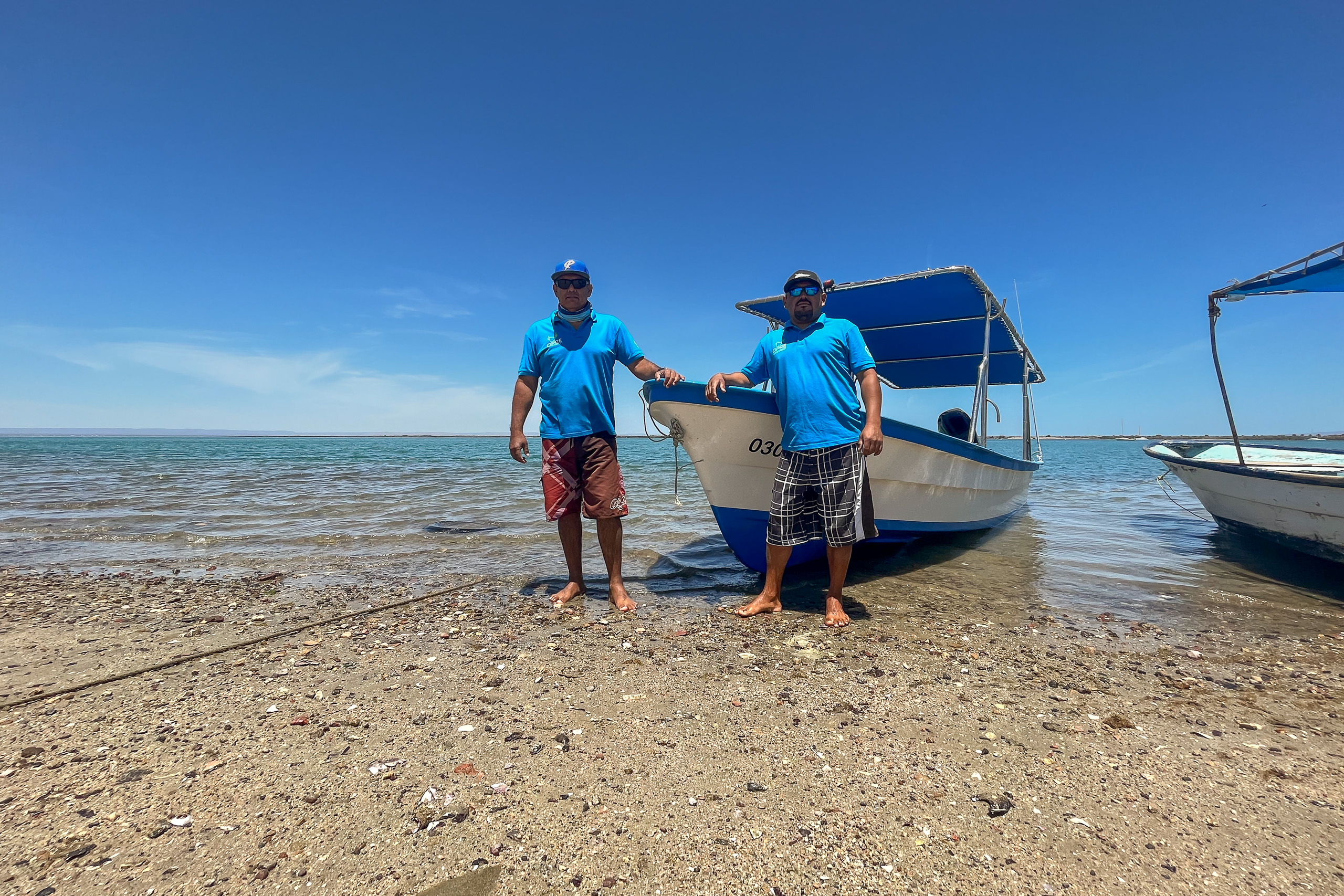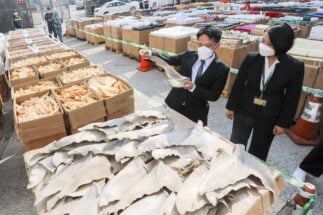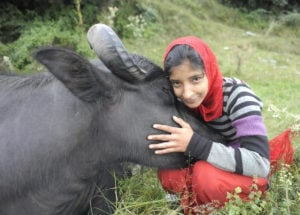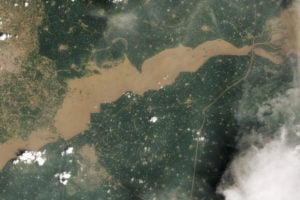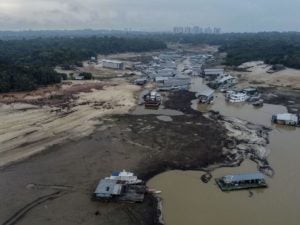The waves rock our boat slightly, as Hubert Mendez throws himself into the sea. A few minutes later he re-emerges, proudly clutching several molluscs with triangular shells.
Mendez, a fisher from the Manglito neighbourhood of La Paz, Mexico is holding “callo de hacha”.
Found mainly on the Mexican Pacific coast, callo can be sold for around a thousand pesos per kilogram (US$58), double the price of shrimp.
Due to overfishing and pollution, the species had been close to disappearing from a part of the Bay of La Paz called La Ensenada. Then, in 2011, a group of local fishers who take pride in the fishing tradition decided to put a stop to illegal extraction and help the mollusc recover.
Despite setbacks involving invasive species and extreme weather, callo numbers have now rebounded to levels that allow the Manglito community to harvest a sustainable amount, selling some on to consumers and restaurants around Mexico.
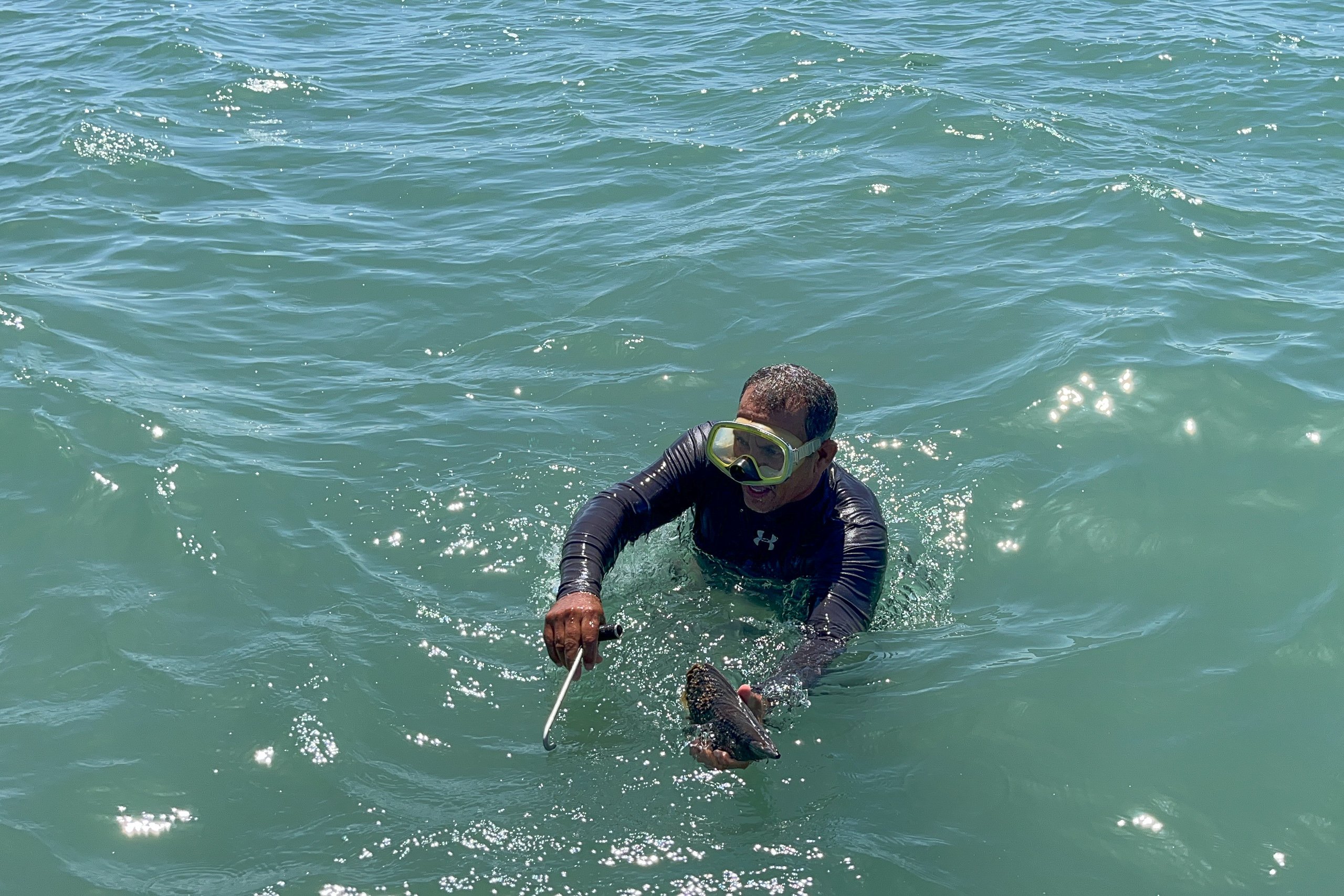
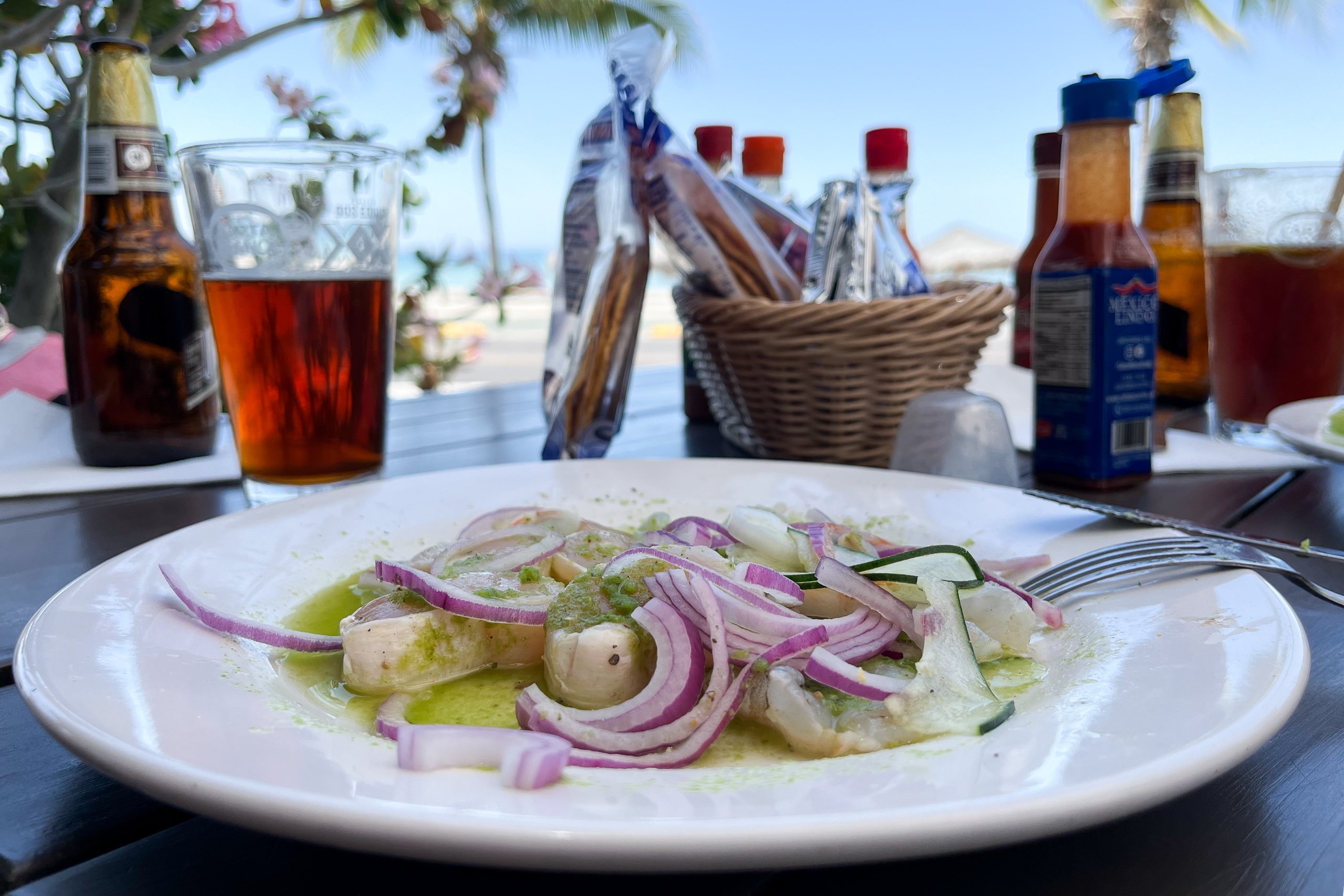
Environmental struggles
For years, many fishing and harvesting activities in El Manglito went unchecked, with most fishers practising without a licence or permit. The absence of fisheries management contributed to the overexploitation of callo. By the early 2000s, this had become blatantly evident in La Paz, the capital of Baja California Sur state; every time the fishers returned from a trip, they seemed to have less callo.
Pollution from La Paz damaged the marine ecosystem and further reduced catches. “By 2000, El Manglito had become a forgotten place. It had literally become the toilet of La Paz,” says Alejandro Robles, president of Noroeste Sustentable, a civil society organisation that supports and trains local people to restore the area. “All the drains went there; the beaches were not well kept and overfishing was turning the mangroves into graves.”
Overfishing was turning the mangroves into gravesAlejandro Robles, president of Noroeste Sustentable
Some Manglito fishers chose to extract fish, clams, crabs and whatever they could in the area or went to other ports in Baja California Sur to continue their work.
In 2011, Robles met Guillermo, the brother of Hubert Mendez who was rumoured to be an illegal fisher. In fact, Mendez was one of the few with a fishing permit. His story caught the attention of Robles, who invited Guillermo to help evaluate the callo de hacha population in La Ensenada.
“We went diving. It took us three months to do a complete sweep and we only counted 40,000 callo de hacha,” Guillermo tells me, as he sits one morning in a small, abandoned boat at the foot of the beach.
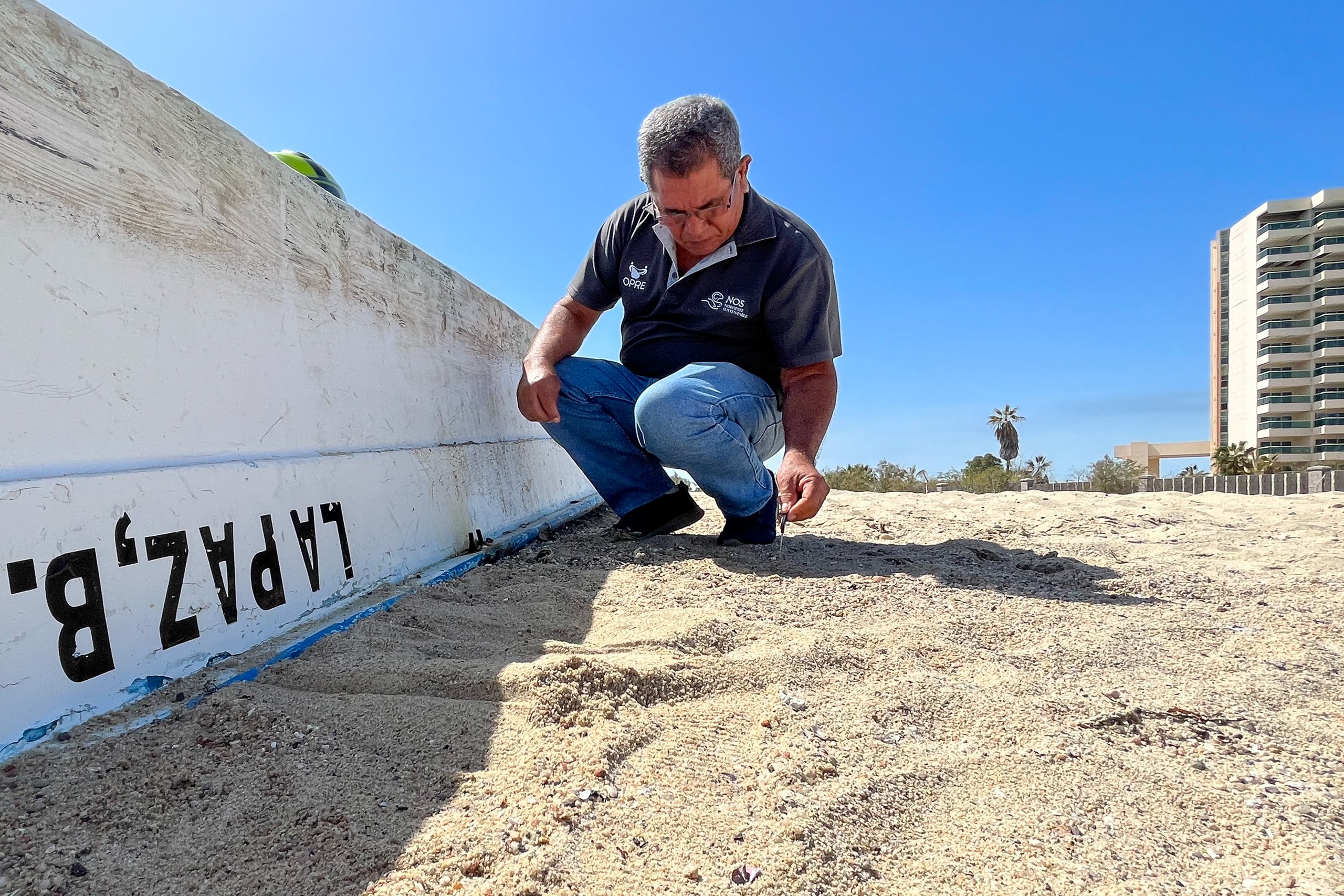
This was a significant drop from the estimated 10 million callo that fishermen say had thrived before the 2000s. The near collapse of the species prompted Robles, Mendez, and Hubert to embark on the callo restoration project.
All aboard the restoration train
Robles was partly inspired by the restoration of Chesapeake Bay on the east coast of the United States. In the late 1800s, Chesapeake had been the world’s largest oyster fishery, but water pollution and overfishing led to its collapse in the 20th century. To restore the ecosystem, government authorities, NGOs and community members came together to improve wastewater treatment, and remove sediments and toxic pollutants, among other actions. Today, the oyster reef is gradually recovering.
In La Paz, Noroeste Sustentable (NOS) decided only to approach the community, because the political climate made it very difficult to engage the government.
One of the biggest challenges would be stopping all fishing during the restoration period, especially as there would not be many alternative sources of income available to the fishers.
The team would have to try and bring the callo population to a level that could begin feeding the community, and then on to numbers that would enable sales beyond it, while preventing anybody from extracting what was growing.
For helping to cultivate callo, fishers could obtain economic support of between 1,500 and 1,800 pesos (US$85 and $103) per week. This was far less than they could generate from illegal fishing.
“We were angry with our husbands,” recalls Claudia Reyes, who came here at the age of 17, when she married one of the fishers. “It was hard for us to understand that all our lives we had lived off illegal fishing and we had to stop.”
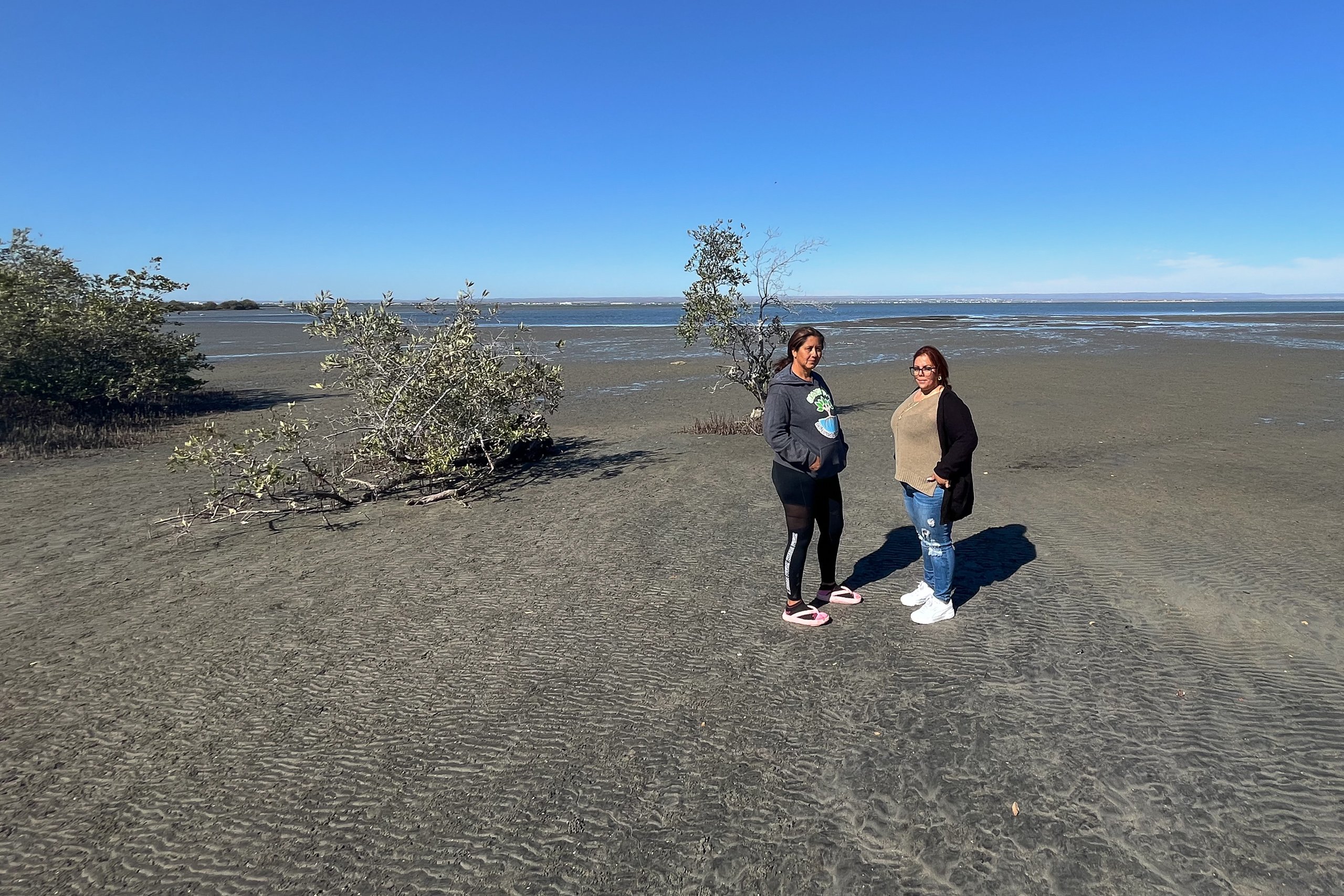
Reyes is now 39 years old and part of the Guardians of El Conchalito, a group of women who protect a mangrove-filled area called Conchalito, which is close to El Manglito.
The most difficult thing for everyone, she says, was suddenly going from having good money to very little.
“But, little by little, we began to understand the value of the restoration work. We worked in collaboration with NOS in the restoration of our products, of ourselves as fishers, and family.”
Her neighbours, the brothers Guillermo and Hubert, had a difficult time trying to convince the other fishers that the project would improve the ecosystem and be worth the short-term loss in fishing income. “They told us that we were traitors,” Guillermo recalls.
However, after learning about the significant loss to species populations, and getting involved in counting them, the fishers reconsidered their position and organised themselves to restore the callo. They wanted to preserve the coast and its resource for future generations.
Planting seeds for the future
The sun’s rays shine on Guillermo’s copper skin, while the coming and going of tiny waves reverberates in the background.
Guillermo, Hubert and other fishers from the community have been cultivating callo since the project began in 2011. Guillermo says the callo farming usually begins in May.
After raising callo larvae in breeding facilities, they sow the 1cm larvae on the seabed in water about 1.5 metres deep. When they have grown to about 6cm, the community cover them with sand. From this position the callo feed on plankton and other microorganisms.
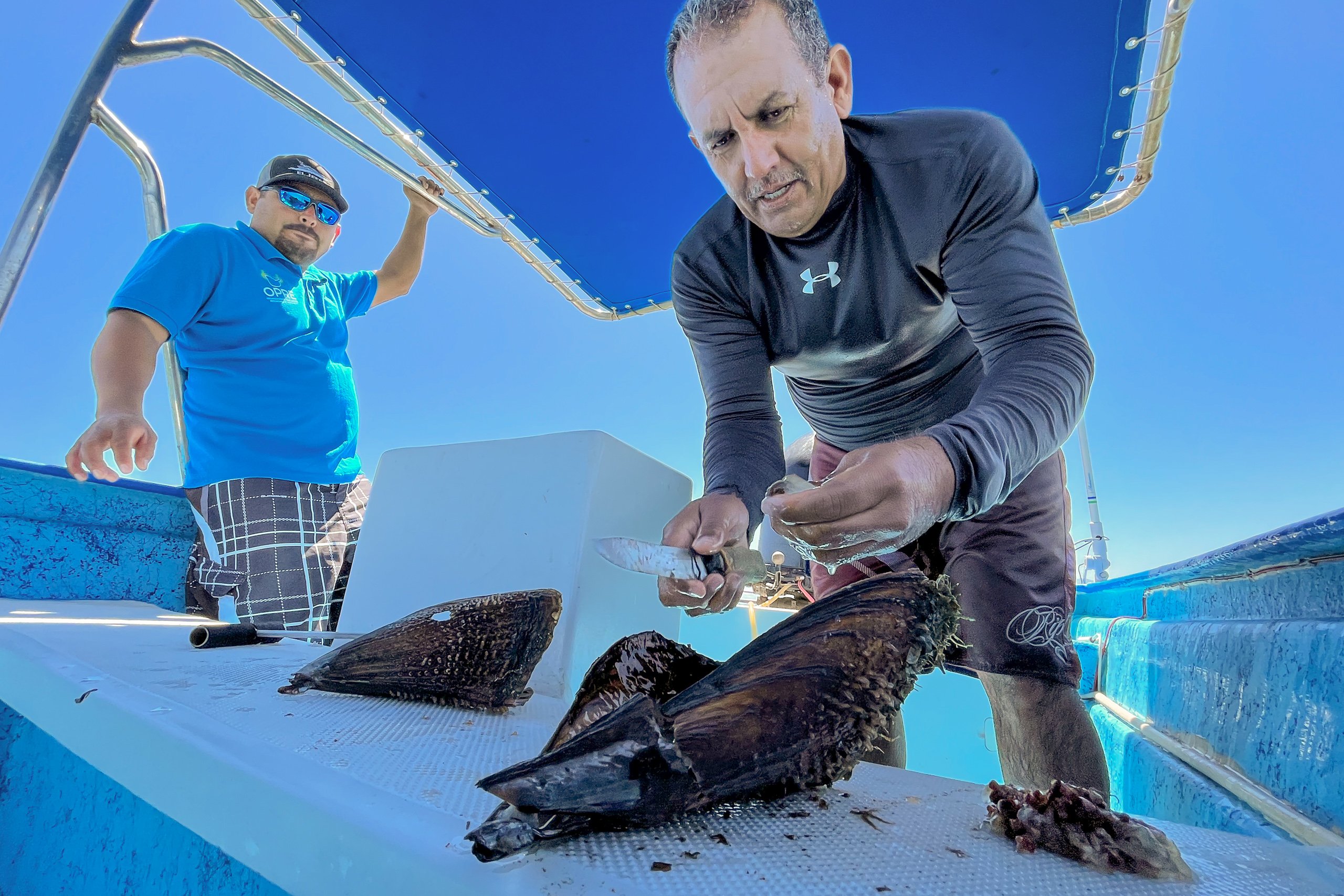
Harvest time comes between August and the end of September when the sea water is colder.
“Once we sow the callo, we protect it with a silk mesh from predators such as crabs, until it grows more,” he adds. “Then the mesh is removed and months later it is harvested.”
After four years of the cultivation work, the population of the callo had reached around 4 million, according to a NOS count in August 2015. This was up from the 40,000 in the initial count.
However, that same year an invasive species of tunicate, which is similar to a sponge, arrived like a plague having attached itself to a boat, the fishers say.
Diving every day to remove the tunicate, the fishers took out more than 200 tonnes but failed to exterminate it. Between 80% and 90% of the callo was killed, the fishers estimated. Then, in the same year, a hurricane hit and, inexplicably, wiped out almost all the tunicates. Restoration work could begin again.
Women, the guardians of El Conchalito
Women have played a fundamental role in the recovery of the callo. During the first year of the project, in 2011, poachers entered the restoration zone in El Conchalito.
No one on the board of directors of the El Manglito fishers’ organisation, which is male dominated, seemed to be doing anything about it. So, in 2017, a group of 22 women asked for a space within the project.
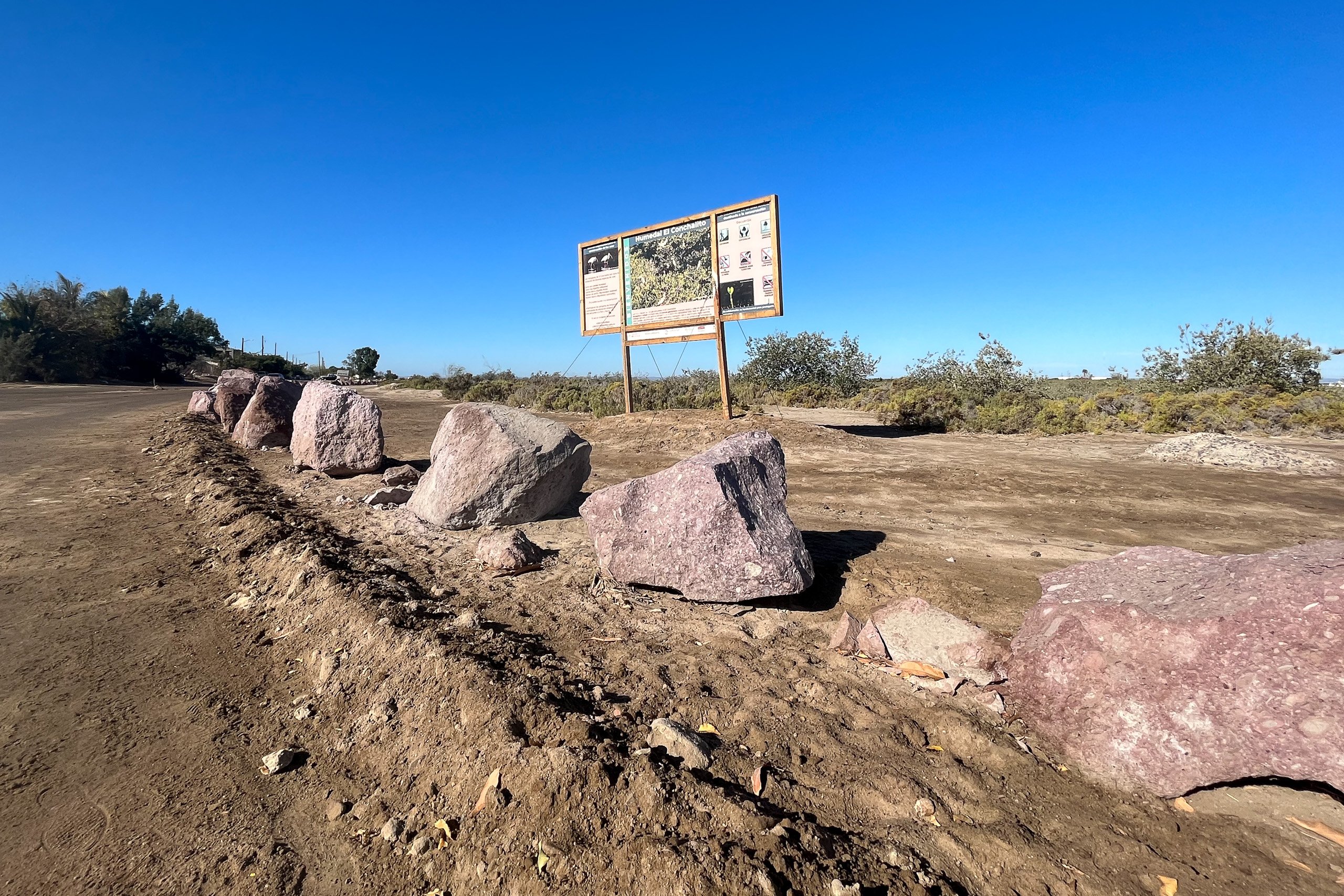
NOS could only offer salaries for seven people to monitor El Conchalito. The women decided to split the payments in half, so they could have places for 14.
When they first started cultivating callo, looters threatened them verbally and even with knives. Sometimes, those who stole their product were people from El Manglito itself, who did not agree with the restoration efforts. Some were actually relatives of the Guardians.
The year 2019 saw a new approach. Relations with the authorities having improved, the Guardians worked with them to place a barrier of boulders in the way of vehicles. Later, they even managed to obtain financial support from the authorities. The Guardians are nowadays one of the most active pillars of the community and an example for women fishers from other regions of the country, where they have gone to share their experiences and give workshops.

Expanding ecotourism
The restoration has been swimming against the current, but it appears to be working. Although NOS has not done a systematic callo count since 2015, based on their knowledge and the guided tours they often facilitate, Hubert and Guillermo say the population has increased and the Ensenada area has recovered. The fishers estimate that there are now over one million callos.
This allows the community to feed themselves and have enough left over to package and freeze for sale nationwide.
Their work has led the community to establish the Organization of Fishers Rescuing the Bay (OPRE), which is made up of more than 100 fishers. OPRE helps members obtain fishing permits from the authorities, enhancing fisheries management and reducing unregulated extraction in the area.
They have also ventured into ecotourism, with the launch in 2020 of the “Manglitour”. Guides explain how callo, clams and oysters are cultivated, the history of the restoration of the place and the importance of surveillance. The tour had to be paused during the Covid-19 pandemic, but it recently resumed.
The Guardians are also looking to venture into sustainable ecotourism in El Conchalito, with bike rides.
Back on the boat, Hubert takes his sharp knife and inserts it into the callo’s hard coating, revealing a round, spongy figure inside.
“Come on, try it! Like this, just out of the sea. It’s the best way to eat it.”
The taste is soft, salty, meaty, reminiscent of cold cooked shrimp. Delicious.
